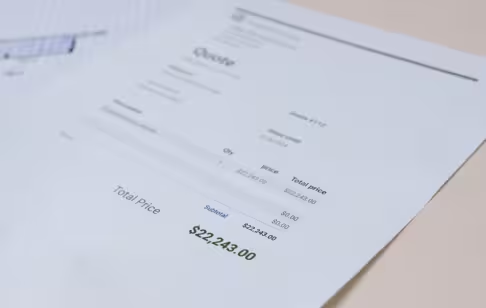Home / Sales Training
DCB ProPartner Sales TRAINING
Welcome to the ProPartner Sales System, a comprehensive, step-by-step process designed to help you close more sales, build stronger client relationships, and grow a thriving kitchen and bath remodeling business.
This system is built on decades of industry expertise and has been carefully crafted to guide you through every stage of the sales journey—from determining which leads are right for you, to connecting with clients and understanding their needs, to building a business that thrives through consistent sales and client satisfaction.

Step 1
Determine - Pre-Qualify Leads to Stop Wasting Time.
Prequalifying Leads Over the Phone: Maximizing Your Time as a TrulyHome ProPartner
As a TrulyHome ProPartner, your time is precious. A quick, efficient phone call can be the key to determining whether a lead is worth your time and effort before meeting them in person. During this 5-10 minute conversation, you need to quickly identify if the lead has the budget, seriousness, and realistic expectations to move forward with a kitchen remodel.
In this guide, we’ll show you how to handle this brief prequalification call, what questions to ask, and how to politely handle a lead that isn’t the right fit.

Step 2
Connect - Understand Your Customer’s Needs, Fears, and Pain Points
By doing this, you can present yourself as the solution to their problems and build trust that sets you apart from the competition.

The Power of Discovery Questions: Uncovering Pain Points and Building Emotional Connections
As a TrulyHome ProPartner, your time is precious. A quick, efficient phone call can be the key to determining whether a lead is worth your time and effort before meeting them in person. During this 5-10 minute conversation, you need to quickly identify if the lead has the budget, seriousness, and realistic expectations to move forward with a kitchen remodel.
In this guide, we’ll show you how to handle this brief prequalification call, what questions to ask, and how to politely handle a lead that isn’t the right fit.

Training Blog: Mastering the Art of a First Impression – Setting the Stage for a Successful Project

Sales Psychology: Connecting with Your Customer's Heart, Not Just Their Head

The Power of Pain Points: Turning Client Challenges into Opportunities for Growth
Step 3
Build - Create a Thriving Business by Overcoming Objections and Closing Sales

Closing the Sale: You've Earned It! Practical Tips for Securing Your Next Kitchen Project
As a TrulyHome ProPartner, your time is precious. A quick, efficient phone call can be the key to determining whether a lead is worth your time and effort before meeting them in person. During this 5-10 minute conversation, you need to quickly identify if the lead has the budget, seriousness, and realistic expectations to move forward with a kitchen remodel.
In this guide, we’ll show you how to handle this brief prequalification call, what questions to ask, and how to politely handle a lead that isn’t the right fit.

Your Business Can Thrive: Building Long-Term Success with TrulyHome
As a TrulyHome ProPartner, your time is precious. A quick, efficient phone call can be the key to determining whether a lead is worth your time and effort before meeting them in person. During this 5-10 minute conversation, you need to quickly identify if the lead has the budget, seriousness, and realistic expectations to move forward with a kitchen remodel.
In this guide, we’ll show you how to handle this brief prequalification call, what questions to ask, and how to politely handle a lead that isn’t the right fit.


Overcoming Pricing Objections: Shifting the Focus from Cost to Value
One of the most challenging parts of the sales process is addressing pricing objections. It can be easy for potential customers to focus solely on the number rather than on the benefits they’ll gain. As a ProPartner, your goal is to guide them away from a fixation on cost and direct them toward what truly matters—their vision, goals, and the value you bring to making their kitchen dreams a reality. This article will explore strategies to overcome pricing objections using discovery questions, pain points, and the art of reframing the conversation.




